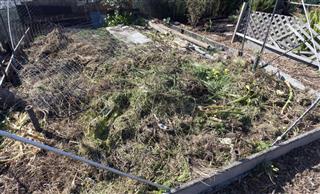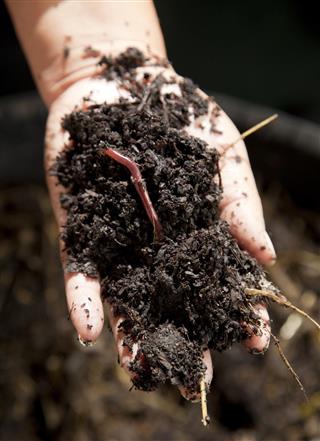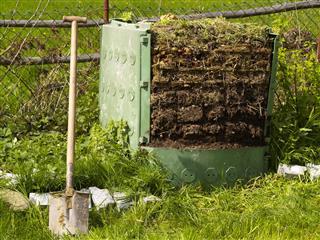
Decomposition reactions refer to a chemical reaction in which a single compound disintegrates into two or more elements or compounds under desirable conditions. We provide you with the definition and examples of these reactions in this ScienceStruck extract.
The fizz in the soda that we drink is carbonic acid. Leaving the soda tin open decomposes the carbonic acid into water and carbon dioxide.
H2CO3 (l) ➜ H2O (l)+ CO2 (g)
A chemical reaction is a process in which bonds between molecules of different compounds/elements are altered. One such type of reaction is decomposition. The term ‘decomposition’ implies the process of disintegration of anything into its constituents. In terms of chemistry, decomposition refers to a compound breaking down into its component elements. It can involve one large compound breaking down into smaller compounds or one small compound breaking down into its elements.
This reaction consists of a single reactant, but multiple products. It is exactly the opposite of the combination reaction in which two or more elements or compounds combine to form a single compound. Continue reading further for the detailed description and examples of decomposition reaction equations.
Decomposition Reaction Definition
In chemistry most reactions happen when the molecules of compounds are excited by some kind of energy. Only when energy is applied, the bonds between the molecules become weak and the molecules break apart into elements or compounds.
Consider a simple reaction in which AB is the reactant and A and B are the products.
AB ➜ A + B
AB breaks down only when energy is applied to it, leading to its decomposition.
Depending on the type of energy, decomposition reactions are classified into three main types, namely:
▶ Thermal Decomposition
When a single compound is heated, it breaks down into multiple elements or compounds. This reaction is said to be a thermal decomposition reaction. Heat is used to loosen and break the bonds between the molecules of the compound.
Potassium chlorate decomposes to form potassium chloride and oxygen.
2KClO3 (s) ➜ 2KCl (s) + 3O2 (g)
This reaction is an example of decomposition happening in everyday life. Water when boiled forms hydrogen and oxygen.
2H2O (l) ➜ 2H2 (g) + O2 (g)
▶ Photolysis Decomposition
When sunlight falls on a compound, its photons break down into smaller components. This reaction is called photolysis reaction. This type of reaction occurs naturally.
Silver chloride in the presence of sunlight reduces to silver and chlorine.
2AgCl (s) ➜ 2Ag (s) + Cl2 (g)
▶ Electrolytic Decomposition
When we pass electricity through a compound occurring in the form of a solution, it breaks down further. This is called electrolysis.
Sodium chloride on applying electricity reduces into sodium and chlorine.
2NaCl (s) ➜ 2Na (s) + Cl2 (g)
Examples of Decomposition Reaction
➽ Potassium chloride decays to form potassium and chlorine.
2KCl (s) ➜ 2K (s) + Cl2 (g)
➽ Hydrogen peroxide decomposes into water and oxygen.
2H2O2 (l) ➜ 2H2O (l) + O2 (g)
➽ Copper chloride on decomposition forms copper and chlorine gas.
CuCl2 (s) ➜ Cu (s) + Cl2 (g)
➽ Calcium carbonate disintegrates into calcium oxide and carbon dioxide.
CaCO3 (s) ➜ CaO (S) + CO2 (g)
➽ Calcium hydroxide decomposes into calcium oxide and water.
Ca(OH)2 (s) ➜ CaO (s) + H2O (l)
➽ Iron sulfide breaks down into iron and sulfur.
FeS (s) ➜ Fe (s) + S (s)
➽ Barium chlorate disintegrates into barium chloride and oxygen.
Ba(ClO3)2 ➜ BaCl2 + 3O2
➽ Sodium carbonate breaks down into sodium oxide and carbon dioxide.
Na2CO3 (s) ➜ Na2O (s) + CO2 (g)
➽ Phosphoric acid on decomposition forms phosphorous pentoxide and water.
2H3PO4 (l) ➜ P2O5 (s) + 3H2O (l)
➽ Ammonium nitrate is broken down into dinitrogen monoxide and water.
NH4NO3 ➜ N2O + 2H2O
➽ Mercury(II) oxide decomposes to produce mercury and oxygen.
2HgO (s) ➜ 2Hg (s) + O2 (g)
➽ Magnesium chloride breaks down into magnesium and chlorine.
MgCl2 (s) ➜ Mg (s) + Cl2 (g)
Facts
▶ Any metal carbonate on getting heated produces metal oxide and carbon dioxide. Consider a general equation as given below, in which M depicts a metal.
MCO3 ➜ MO + CO2
Same is the case with metal chlorate. It results in the formation of metal chlorate and oxygen.
▶ Some amount of energy is required to decompose a compound. The type of energy can be heat, light, or electricity.
One common aspect of all types of decomposition reactions is that they are endothermic in nature. This means that these reactions absorb energy to decompose into its constituent parts.





























